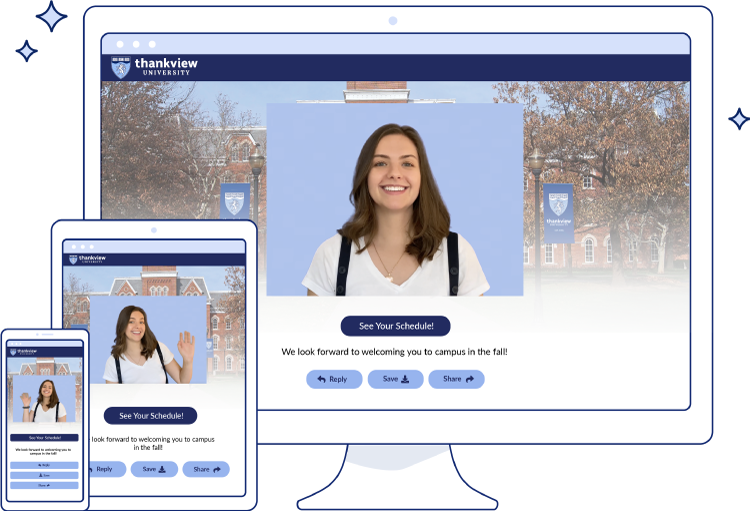Donor Management Software: How To Enhance Your Relationships
Managing and organizing your donor data might feel like a daunting task, even for small nonprofits. Understanding what to do with your donor data once you’ve collected and organized it can be even more intimidating!
No matter how long you’ve been raising funds and managing donors, you’re probably already using donor management software — or you know you need to ditch your old-fashioned spreadsheet soon for a more practical approach.
Your donor management platform should be a software solution that helps you spend less time searching for data and more time building relationships to improve donor retention. Whether you’ve been using a donor management platform for years or are just getting started, you can use this guide to ensure you’re making the best of your donor database with whichever platform you use.
What Is Donor Management Software?
Donor management software houses information about not only your donors but all supporters, including volunteers, advocates, event attendees, and board members. Sometimes referred to as constituent relationship management software or a nonprofit CRM, it lets you document and report on supporter data.
From basic demographics to wealth and income data or even potential corporate match opportunities, the data you can track and act on invaluable. Many donor management platforms allow you to integrate donor data with other programs you might use. For example, you can integrate ThankView with your CRM.
There are lots of donor management systems available and explicitly created for nonprofit organizations. If you’re just starting to explore using a donor management platform, you may have heard of a few names below. To demonstrate the differences out there, we’ve put together a few pros and cons for each.
Bloomerang
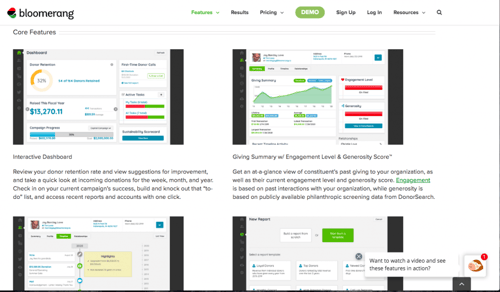
Pros: Bloomerang offers multiple pricing options available, so you can select and pay for only what you need. Real-time metrics reports allow you to take a snapshot of your data when you need it.
Cons: There is only one access level for all users. If you have some information in your database that is more private or unnecessary for others to have access to, there’s no way to limit that.
DonorPerfect
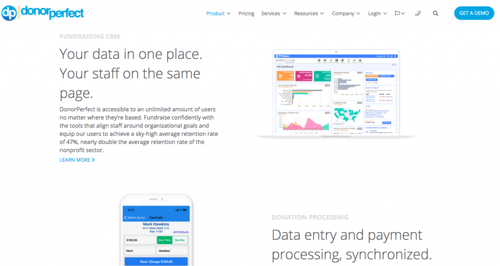
Pros: DonorPerfect includes integrated credit card payment processing tools, which is helpful if you’re looking to consolidate and integrate.
Cons: Users report the available knowledgebase is very basic and could assume a bit more baseline knowledge.
Salesforce
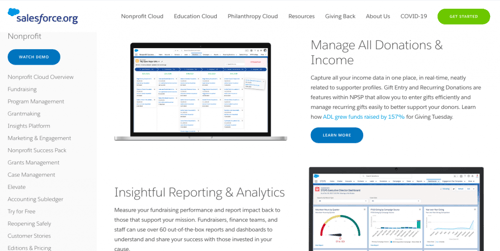
Pros: Salesforce is excellent for organizations active on social media as their platform easily integrates with most social media functionalities.
Cons: Users report challenges with customization for their nonprofit. You may need to outsource the setup unless you have a fundraising software expert on staff to help you customize your platform.
EverTrue
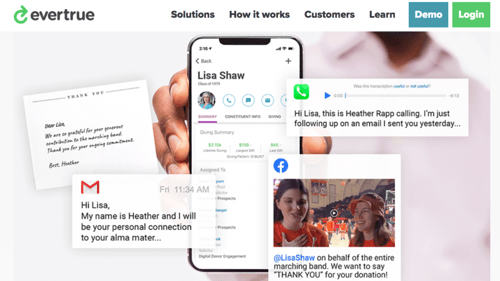
Pros: EverTrue is convenient for ThankView users because you can integrate data from your video communications right to the EverTrue platform. This allows you to see your ThankView videos’ ROI right from EverTrue’s “Interaction” section.
Cons: Though there are free demos available, the platform does not currently offer a free trial.
Organizing Donor Data

If your donor data exists in bits and pieces on different platforms and spreadsheets, it can be tough to combine data needed for decision making. You may always need to use multiple platforms to cover your needs, so consolidate and integrate where you can! Most donor management software platforms can integrate with other platforms like fundraising tools, such as your volunteer management, email marketing, or giving platform.
Using donor management software simplifies tracking donor and donation data. Almost as important, it makes it easy for anyone on your team to jump in and access any detail they need to. Staffing changes and unplanned absences can be tough to overcome even when planned far in advance. Housing your donor data in a centralized location ensures important donor information is documented and accessible no matter the staffing situation.
Capturing the Right Data
If you’re going to use the data in your platform to make decisions around communications and marketing, you’ll need high-quality data! Gone are the old days where you were fortunate to have a name and address with bonus points if you had someone’s email address.
You might have very little data or just the basics for new donors. As you cultivate and steward, more details will emerge through the natural relationship-building process.
Here’s a quick list of data you can collect for your nonprofit contacts:
- General details: Gather the full name, mailing address, email address, and phone number(s). Collect gender, age, and marital status as an option.
- Donation details: Include dates of contributions and note the type of donation and the amount, if it was monetary.
- Employer: Note the individual’s profession or employer to identify matching corporate sponsor opportunities and segment appropriately in targeted marketing.
- Social media handles: Watch your contacts on social media to quickly identify advocacy partners and recruit potential ambassadors.
- Preferences: Note how your contacts prefer to be addressed and how they like to be contacted, so they see how much you respect their choices and appreciate their support.
- Interactions: Document any interactions you have with contacts so you can work towards a more engaging relationship by remembering the details they share with you.
- Events attended: Notate the events your contacts attend and watch for trends to allow for more targeted invites and asks.
- Communications: Record the communications from your contacts and note which types of communication they prefer to use.
Managing Your Data Strategically

We talked about the different types of data you can collect and a little bit about why. Now let’s take a deeper dive into how you can be strategic in using the data you collect to enhance every aspect of your donor relationships.
Segment Your Donor Base
Segmentation breaks donors down into groups based on the length of time they’ve been engaged with your organization, past campaigns supported, preferred communication, giving history — the possibilities are endless.
Segmenting your donors will allow you to deliver more tailored, personalized outreach and messaging. For example, you can segment donor profiles based on how they prefer to contribute. For donors who like to make an online donation, sending a custom donation form via email might make more sense than a traditional mailed letter.
Identify Opportunities for Matching Gifts
More than 18 million people work for companies that offer corporate matching gift programs. Use the donor employment information in your database to identify potential corporate matching opportunities. You’d be surprised at home many donors are unaware of the matching gift programs available to them. Use your records to ensure your donors know how to participate.
Use Data To Plan Fundraisers and Events
Streamline your event planning by using attendance details from past fundraisers to decide which types of events are best attended. Take a look at particular times of the year where online fundraising events were more successful and build on what worked. You can even set more realistic goals for each fundraising campaign by looking back on past results. Maybe you had a direct mail campaign that was wildly successful — take a look at the data to replicate what works.
Make the Right Ask
Look at donor histories to see what’s been given historically so you can make a more strategic ask. For example, someone who has donated $250 each year for several years might make a jump to $300 without much thought if they were explicitly asked. On the contrary, a donor who has consistently given $5 a month might not view a request for $300 as reasonable.
Making the Most of Your Donor Management Tools
You can increase your donor engagement with the right strategies in place. If you already use other nonprofit software platforms for event management, donation management, or even accounting software such as QuickBooks, look for a platform that easily integrates with the systems you already have in place.
If you’d like to take your donor management to the next level by streamlining your communications and send your donors personalized video messages, book a demo with the ThankView team today!
